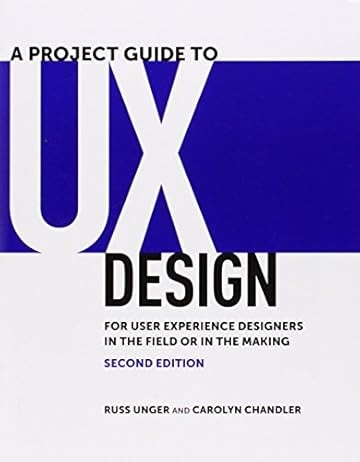User Experience (UX) design is a critical aspect of creating successful digital products. But navigating the vast landscape of UX can be daunting. “A Project Guide To Ux Design” aims to provide a comprehensive overview of the UX design process. Is it the definitive guide, or just another textbook? Let’s delve into this book and see how it stacks up as a practical resource.
This book intends to cover the fundamentals of UX projects, and it is divided into chapters covering essential components such as project management, business requirements, user research, personas, content strategy, and wireframing.
 A Project Guide to UX Design book cover
A Project Guide to UX Design book cover
A Broad Overview, But Lacking Depth?
The book feels similar to introductory textbooks that one might encounter in their early university years. It serves as a primer to a substantial subject. While this can be beneficial to some extent, one quickly realizes that the true understanding lies in further exploration and more in-depth resources.
Having worked in web teams for years, I found myself not learning anything significantly new from this book. This suggests that its target audience might not be seasoned professionals. While it’s a good starting point, the subjects are addressed at such a basic level that it’s hard to imagine a complete novice gaining substantial knowledge without additional research.
Personas: An Example of Missed Opportunity
Consider the chapter on personas, a common yet sometimes controversial UX technique. There’s ample opportunity to explore the pros and cons, provide advice on avoiding common pitfalls, and delve into the nuances of their application.
Instead, the chapter primarily focuses on what an ideal persona template should look like. The chapter concludes with a brief section that casually mentions differing opinions among practitioners regarding the value of personas. This felt like a missed opportunity to truly analyze the technique’s advantages and disadvantages. A deeper dive into user empathy and understanding their motivations would have been beneficial.
Glimmers of Insight, But Dated
Some of the later chapters offer slightly more insight. The chapter on user testing methodologies, for instance, contains some intriguing information. However, even then, Steve Krug’s “Rocket Surgery Made Easy” offers a more engaging and encouraging introduction to usability testing. The book is also somewhat dated. In a field as dynamic as UX design, practices considered “best” a few years ago may now be outdated.
For example, mobile is barely mentioned in this 300+ page book. Responsive design is briefly acknowledged as a novel technique to consider. This lack of focus on mobile-first design and accessibility is a significant drawback in today’s digital landscape.
The Value of a Comprehensive Overview
The truth is that UX is too broad a subject to be comprehensively covered in a single textbook. Each chapter could easily be expanded into a book of its own.
However, there are valid reasons to keep this book on your bookshelf.
There’s undeniable value in having a single resource that touches upon all the major UX techniques, even if superficially. It could be a powerful tool for demonstrating the importance of UX to a project or stakeholders.
Alt text: UX design process diagram showing research, ideation, prototyping, testing, and iteration stages.
Just remember to emphasize that there’s much more to learn beyond what’s covered in the book. Consider this as a jumping-off point for further exploration and specialization.
Final Verdict: A Starting Point, Not the Destination
“A Project Guide to UX Design” provides a broad overview of UX principles and techniques. It may be useful for those completely new to the field, or for those needing a quick refresher on various aspects of the UX process. However, it lacks the depth and up-to-date information needed to be a definitive guide. Supplement this book with more specialized resources and stay current with the latest trends in UX design to truly master the art of creating user-centered experiences. Look for books covering specific areas like interaction design, user research methods, and accessibility to gain a deeper understanding of the field.